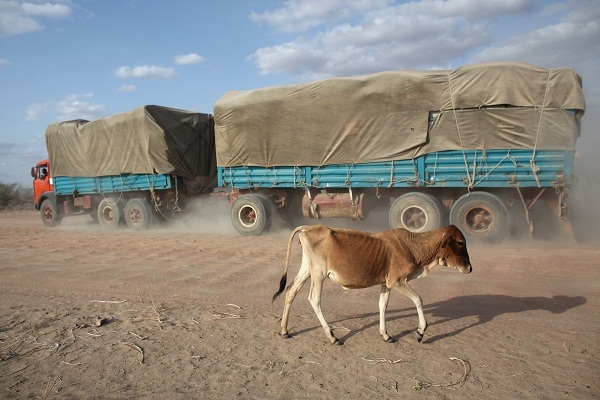Before setting off for Kenya, where I’m spending six weeks helping The Spectator’s ‘Wild life’ columnist, Aidan Hartley, set up a school, I worried about the safety of my family. Would I be exposing my wife and four children to danger? I’d heard a lot of horror stories about violent crimes committed against the white population, up to and including murder. No, it was too irresponsible. I simply couldn’t leave them in Acton.
OK, I’m exaggerating. The murder rate in Nairobbery is higher than London. But the house we’ve rented on the Ridgemount Estate in the Rift Valley feels a lot safer than our house in west London. Not only is the estate patrolled by G4S, but we have two dedicated security guards who are here from sundown to sun-up.
There’s only one really dangerous thing about living in Kenya and that’s the roads. If you thought Spanish drivers were bad, you should try navigating the main highway out of Nairobi. The number of hazards on a typical stretch of road is so great it’s almost comical.
First, there are the matatus, the minibus taxis operated by rival street gangs that constitute the country’s main public transport system. They hurtle along at 60mph trying to beat each other to the next pick-up point, then screech to a halt in a cloud of dust. They’re so full it’s as if the passengers are trying to get into the Guinness Book of World Records, and just in case you’re in any doubt about the drivers’ disregard for human life, you occasionally see one upside down by the side of the road. The names of the operating companies are emblazoned on the front and rear windscreens: ‘Da Bomb’, ‘Obama’, ‘Bad Boy’, etc.
Then there are the less safe forms of public transport, such as the motorcycle taxis known as boda-bodas. When all the children are in the car, we entertain ourselves by seeing who can spot the most people on the back of a boda-boda. Four-year-old Charlie is the current title-holder, having pointed out a family of six riding pillion on a 125cc trials bike. It overtook us doing about 75mph in a 30mph zone — not that anyone pays any attention to traffic signs.
We’ve rented a Toyota Land Cruiser, a snip at £68 a day. We tried three different agencies and it was the cheapest we could find. Back in the UK, you could buy a second-hand Land Cruiser for the total amount we’re spending on renting one for six weeks, but not here. I did a bit of research and there’s no second-hand car market to speak of. The roads are so bad and accidents so common that cars rarely last more than three years. Those who can afford it buy them new, ride them into the ground and then abandon them by the side of the road.
Traffic fatalities are so high it’s a major issue in the forthcoming general election. The current president, Mwai Kibaki, was injured in a car crash in 2002, and scarcely a week passes without a prominent politician being involved in a wreck of some kind. The Kenyan parliament passed a new traffic act last year, granting the police new powers to impose on-the-spot fines, but it doesn’t seem to have made any difference. More than 300 people were killed in road accidents over Christmas and the New Year, a new record.
Being English, I’m much more concerned about running over an animal than rear-ending a matatu. One of the striking things about East Africa’s largest economy is that modern technology seems to have made little impact on traditional agrarian communities. You see livestock everywhere. On the main road from Gilgil to Naivasha, it’s not uncommon for the car in front of you to suddenly swerve to avoid hitting a cow in the middle of the road. Not all of them bother to swerve, of course, which means you could find yourself with an airborne cow sailing towards your windscreen. I don’t remember that coming up when I studied the Highway Code.
The solution I’ve plumped for when travelling back and forth to Nairobi is to hire a driver called Man-man — a thousand Kenyan shillings for the day, which works out at about seven quid. He’s a complete kamikaze merchant, but can avoid a goat at 80mph without ploughing into a family of six on the back of a boda-boda. I never thought I’d say this, but the drivers out here make me nostalgic for Sunshine Cabs back in Shepherd’s Bush.







Comments